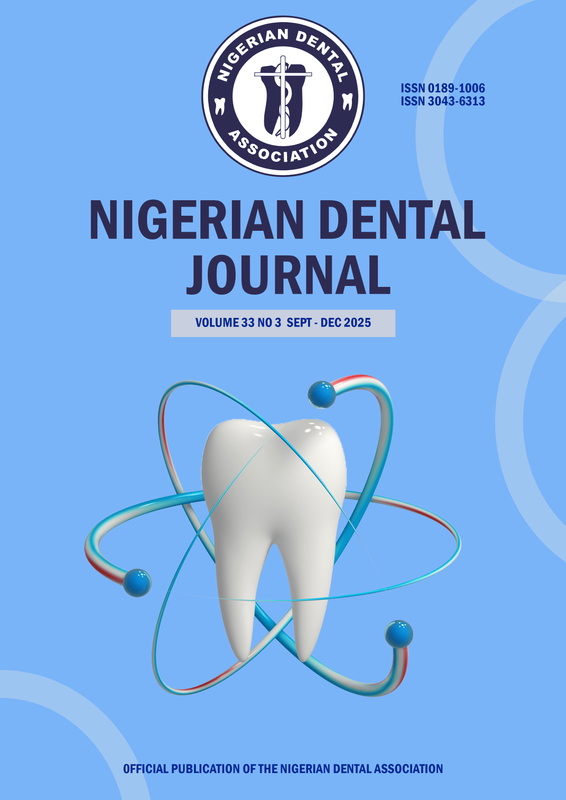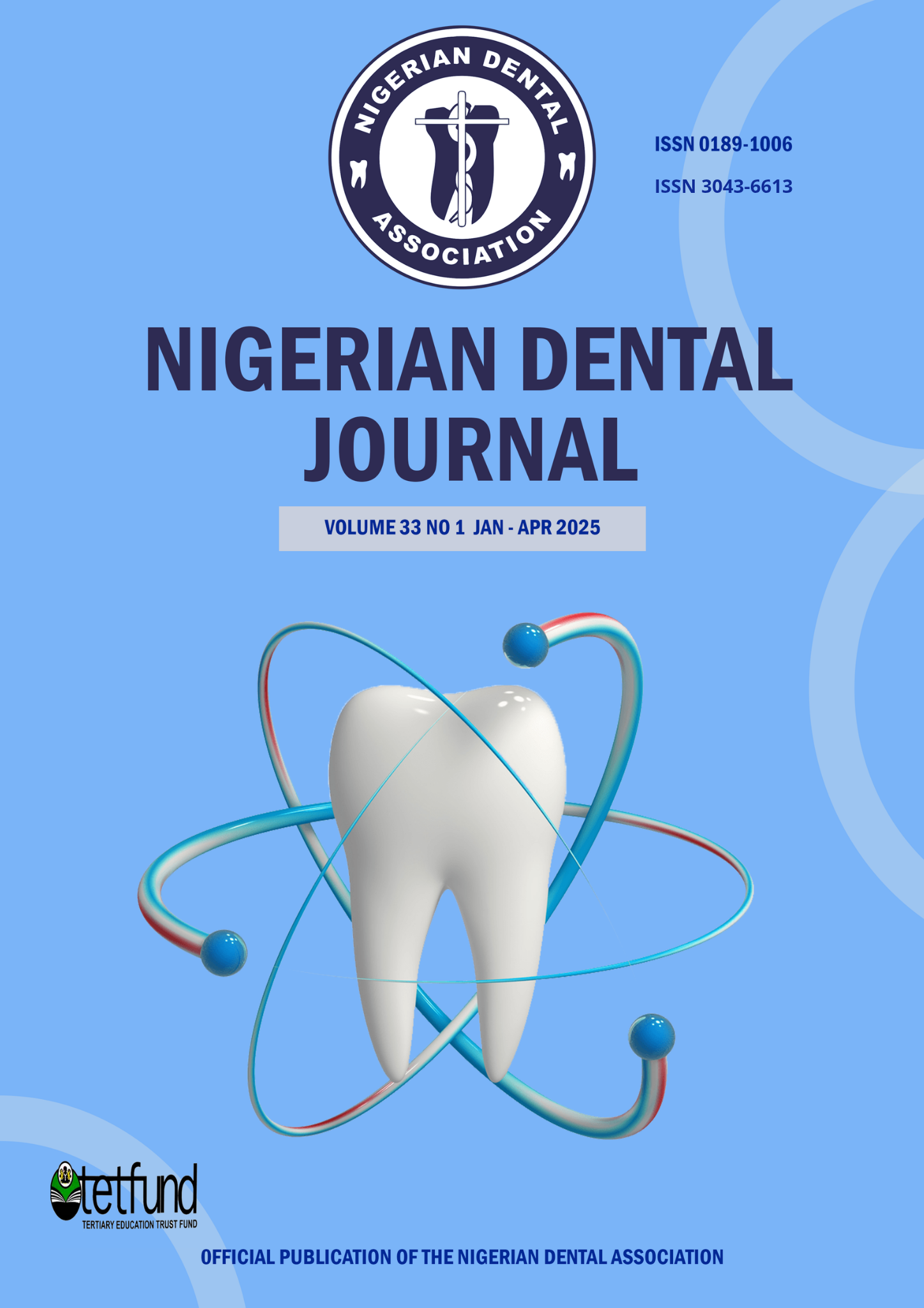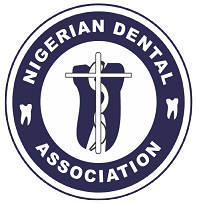Awareness of Malocclusion and Desire for Orthodontic Treatment Among Secondary School Pupils in Ondo City, Ondo State
DOI:
https://doi.org/10.61172/7dgje293Keywords:
Malocclusion, Orthodontic treatment, Ondo stateAbstract
Background: Malocclusion is a prevalent dental issue, particularly among children and young adults, with significant implications for dental function and aesthetics. Understanding the occurrence of malocclusion and the desire for orthodontic treatment among secondary school pupils is crucial for early intervention. This study assesses these factors among secondary school pupils in Ondo City, Ondo State.
Materials and Methods: A cross-sectional descriptive study was conducted in Ondo City, Ondo State, Nigeria. The study included secondary school pupils aged 11-15 years, with a representative sample size of 242. Data was collected using a structured questionnaire, which checked for their awareness of malocclusion, knowledge, and desire for orthodontic treatment. The survey data was collected and organized into Microsoft Excel spreadsheets and statistically analyzed utilizing the Statistical Package for the Social Sciences (SPSS) version 25.0 software. The statistical test used was the chi-square test and P values less than 0.05 were statistically significant (P < 0.05). Ethical approval was obtained from the Ethics and Research Committee of the University of Medical Sciences, Ondo.
Results: The study revealed that 56.6% of pupils observed their teeth as properly aligned, while 78.5% had seen peers with misaligned teeth. Significantly more females observed misalignment in their teeth, while males reported more teasing due to misaligned teeth (p < 0.05). Despite the awareness of malocclusion, 86% of pupils disapproved of living with it throughout life, with more females expressing dissatisfaction with their dental arrangement.
Only 36.4% of pupils had heard of orthodontics, primarily from teachers and dentists. Significantly more females demonstrated knowledge about orthodontic treatment (p < 0.05). While 61.9% perceived a need for orthodontic treatment, only 50.8% were willing to accept it. Age statistically correlated significantly with awareness, knowledge, and willingness to accept treatment (p < 0.05).
Conclusion: The study reports a variation in malocclusion awareness and the desire for orthodontic treatment among secondary school pupils, with age and gender playing significant roles as older pupils and females showed higher awareness and treatment desire.
It also showed the need for educational interventions to increase awareness, especially among younger pupils and males, to address oral health disparities and improve psychological well-being among school pupils in Ondo City.
Downloads
References
1. Aikins E. A, DaCosta O.O, Onyeaso C.O, Isiekwe M.C. (2011) Orthodontic Treatment Need and Complexity among Nigerian Adolescents in Rivers State, Nigeria. International Journal of Dentistry 2011: 813525.
2. Al-Bitar ZB, Al-Omari IK, Sonbol HN, Al-Ahmad HT, Cunningham SJ (2013) Bullying among Jordanian schoolchildren, its effects on school performance and the contribution of general physical and dentofacial features. American Journal of Orthodontics and Dentofacial Orthopedics 144(6):872-878.
3. Awaisi ZH, Asad S, Mahmood A. (2012) Social barriers towards orthodontic treatment need. Pak Oral Dent J 32.
4. Belluccci CC, Kapp-Simon KA. (2000) Psychological considerations in orthognathic surgery. Clinics in Plastic Surgery 2000; 34:11-16.
5. Central Intelligence Agency CIA (2023) The World Factbook. Available online: https://www.cia.gov/the-world-factbook/countries/nigeria/. Accessed 7th November, 2023.
6. Cigerim SC, Erhamza TS. (2021) Evaluation of awareness and knowledge of orthodontic treatment among primary and secondary school students: A cross-sectional epidemiological school study. APOS Trends Orthod 11(2):140-7.
7. Dhakal J, Shrestha M, Shrestha M, Acharya A (2019) Comparison of Knowledge and Attitude Towards Orthodontic Treatment Among High School Students. Orthodontic Journal of Nepal, Vol. 9 No. 2: 61-65.
8. Evan AC (2020) Awareness of Malocclusion and Behaviour towards Orthodontic Treatment among Nursing Students. IOSR Journal of Research and Method in Education 10(3):17-20.
9. Fasehun Orobola and Sekoni Ropo (2022) A Profile of Ode Ondo, 2022. Retrieved June 21st, 2022 from http://www.ekimogundescendant.org/profile-of-ode-ondo-ondo-town/.
10. FDI World Dental Federation (2016) Definition of Oral Health, 2016. Available online: https://www.fdiworlddental.org/fdis-definition-oral-health. Accessed 7 November, 2023.
11. Feldmann I, List T, John MT, Bondemark L. (2007) Reliability of a questionnaire assessing experiences of adolescents in orthodontic treatment. Angle Orthodontics 77:311-7.
12. Jakati SV, Harish A, Khetal N, Hazarey PV, Aley M, Chachada A, Mankar M (2017) Survey on awareness about orthodontic treatment in general population of Nagpur district. International Journal of Advanced Research 5(3):500-504.
13. Kaur B. (2009) Evaluation of oral health awareness in parents of preschool pupils. Indian Journal of Dental Research 20:463-5.
14. Kharbanda OP. (2013) Orthodontics Diagnosis of and Management of Malocclusion and Dentofacial Deformities. Elsevier India Publication; p 20-26, 32-33, 42, 45-50. Available from: https://www.elsevier.com/.../orthodontics-diagnosis...management-ofmalocclusion-an.
15. Kolawole KA, Otuyemi OD, Jeboda SO, Umweni AA (2008) Awareness of malocclusion and desire for orthodontic treatment in 11 to 14 year old school pupils and their parents. Australian Orthodontic Journal 24(1):21–25.
16. Muqtadir Quadri S, Thilagrani P, Dhanyasi A, Mongia J, Agrawal A. (2015) Awareness towards orthodontic treatment in central Indian school pupils. Scholars Journal of Dental Sciences 2:45-8.
17. Obinna C and Ijakwu A (2023) Over 120m Nigerians have poor dentition - Orthodontists. Available online: https://www.vanguardngr.com/2023/09/over-120m-nigerians-havepoordentitionorthodontists/. Accessed on 29th of October, 2023.
18. Onyeaso C. O. (2004) Prevalence of malocclusion among adolescents in Ibadan, Nigeria. American Journal of Orthodontics Dentofacial Orthopedics 126: 604-7.
19. Otuyemi OD, Ogunyinka A, Dosumu O, Cons NC, Jenny J. (1999) Malocclusion and Orthodontic Treatment need of Secondary school students in Nigeria, according to the Dental Aesthetic Index (DAI). International Dental Journal 49(4):203-210.
20. Otuyemi OD (2001) Orthodontics in Nigeria: journey so far and the challenges ahead. Journal of Orthodontics 28:90–2.
21. Pandey M, Singh J, Mangal G, Yaav P. (2014) Evaluation of awareness regarding orthodontic procedures among a group of preadolescents in a cross-sectional study. Journal of International Society of Preventive and Community Dentistry 4:44-7.
22. Proffit WR and Fields HW (2000) Contemporary Orthodontics. Chicago: Mosby Year Book, 2000; pp. 1-15.
23. Proffit WR. Contemporary Orthodontics, 5th edition (2013). Elsevier LTD, Oxford.
24. Rwakatema DS, N'gan'ga PM, Kemoli AS (2006) Awareness and Concern about Malocclusion in 12 - 15-year-olds in Moshi, Tanzania. East African Medical Journal pp.92-97.
25. Sakshi Sharma, Avijit Avasthi, Sanchit Kumar, Neetika Singh (2019) Epidemiology of Malocclusion: An Indian Perspective-Review Article. Sch J Dent Sci, March, 2019; 6 (3): 142–147.
26. Siddegowda R. (2015) An epidemiological survey on the awareness towards orthodontic treatment among middle school and high school pupils of Karnataka state. J Cell Sci Ther 6:10-2.
27. Smita Patil, Raghu Devanna, Azhar Mohammed, Rajat Mehndiratta, Gagandeep Singh Dang, Anuraj Singh Kochhar (2021) Awareness And Knowledge Regarding Malocclusion Among Young Adults. European Journal of Molecular & Clinical Medicine ISSN 2515-8260 Volume 8, Issue 2.
28. Umeh OD, Ben Okoye AL, Isiekwe IG, Sanu OO, Utomi IL, Dacosta OO. (2021) Impact of malocclusion on the Oral Health Related Quality of Life (OHRQoL) of 8 to 10 years old school pupils. Nigeria Journal of Dental Research 6(2):208-218.
29. Zakirulla M, Almubarak H, Fageeh SN, Alghothimi AA, Alqahtani SK, Alqahtani FM, Alshahrani FT. (2019) Awareness and Behaviour Related to Orthodontic Treatment among School pupils in Aseer Region, Kingdom of Saudi Arabia. Open Journal of Stomatology, 9, 87-94. https://doi.org/10.4236/ojst.2019.94009.
Downloads
Published
Issue
Section
License
Copyright (c) 2025 Augustine Edomwonyi, Nathan Ikimi, Timothy Edun, Onengiyeofori Selema Tariah

This work is licensed under a Creative Commons Attribution 4.0 International License.
Open Access Statement
- We became fully Open Access since January 2023.
- Our new and archived materials are available free of charge on open basis and under a Creative Commons license as stated below.
Copyright statement
Copyright © 1999 The authors. This work, Nigerian Dental Journal by Nigerian Dental Association is licensed under Creative Commons Attribution 4.0 International License.


